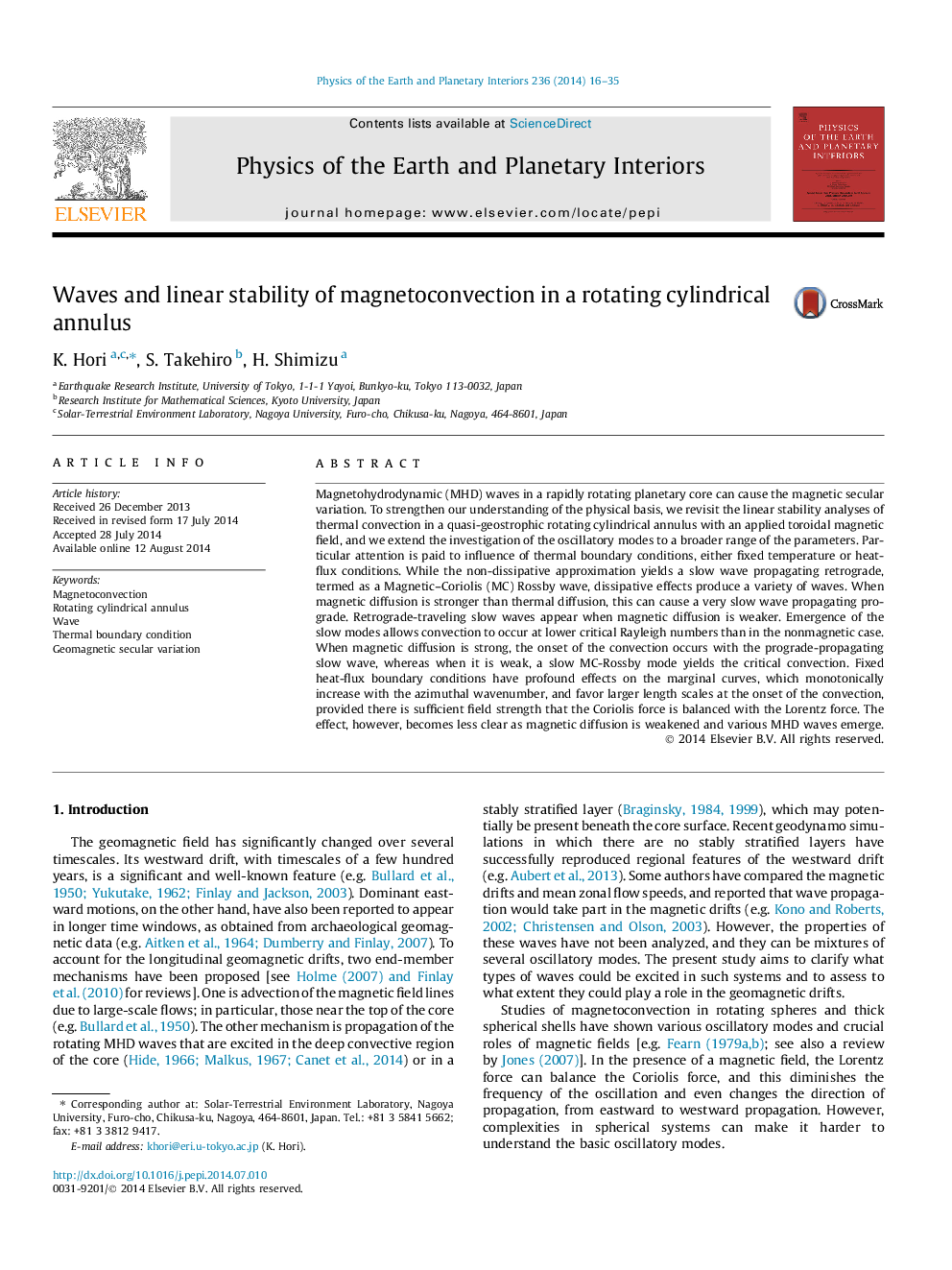| Article ID | Journal | Published Year | Pages | File Type |
|---|---|---|---|---|
| 4741446 | Physics of the Earth and Planetary Interiors | 2014 | 20 Pages |
•The linear stability of rotating magnetoconvection is examined in an annulus model.•The convection onsets with a prograde-propagating slow wave when Pm < Pr.•It is a retrograde-propagating, slow MC-Rossby wave when Pm > Pr.•Thermal boundary conditions can significantly change the marginal curves.•This study provides the physical basis to explore waves in planetary fluid cores.
Magnetohydrodynamic (MHD) waves in a rapidly rotating planetary core can cause the magnetic secular variation. To strengthen our understanding of the physical basis, we revisit the linear stability analyses of thermal convection in a quasi-geostrophic rotating cylindrical annulus with an applied toroidal magnetic field, and we extend the investigation of the oscillatory modes to a broader range of the parameters. Particular attention is paid to influence of thermal boundary conditions, either fixed temperature or heat-flux conditions. While the non-dissipative approximation yields a slow wave propagating retrograde, termed as a Magnetic–Coriolis (MC) Rossby wave, dissipative effects produce a variety of waves. When magnetic diffusion is stronger than thermal diffusion, this can cause a very slow wave propagating prograde. Retrograde-traveling slow waves appear when magnetic diffusion is weaker. Emergence of the slow modes allows convection to occur at lower critical Rayleigh numbers than in the nonmagnetic case. When magnetic diffusion is strong, the onset of the convection occurs with the prograde-propagating slow wave, whereas when it is weak, a slow MC-Rossby mode yields the critical convection. Fixed heat-flux boundary conditions have profound effects on the marginal curves, which monotonically increase with the azimuthal wavenumber, and favor larger length scales at the onset of the convection, provided there is sufficient field strength that the Coriolis force is balanced with the Lorentz force. The effect, however, becomes less clear as magnetic diffusion is weakened and various MHD waves emerge.
